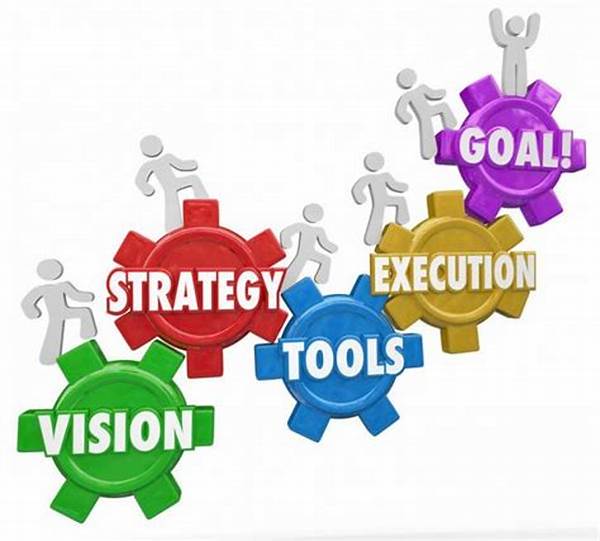
Five Critical Components of Business to Ensure Operational Excellence – Business Operations Performance Management
In the day-to-day busyness of business, it is very easy to get mired in transactional stuff and lose sight of your mission and the reason you are in business and why you do what you do. How much more effective the organization would be and how superior the results if every person working on every task in the company can link it upwards stage by stage to the overall vision for the company ? If the person went home every day with a sense of fulfillment through finding Meaning in Work and knowing that his/her work contributed to a higher purpose? A shared vision is a very powerful motivator for people and operational excellence is possible only when there is a critical mass of people for whom business is personal.
Wishful thinking? Not really, when you consider that many studies have proved beyond a doubt that meaningful work leads to personal happiness, professional success AND profitable growth for the organization that provides this (clarity of vision, mission and inter-linkage to the efforts at ground-level).
So, how do you align your day-to-day business operations to ensure that you and your people are finding meaning in work? It all comes down to how well you have thought through, communicated and implemented these components of business:
Business Component #1: Vision Statement – A vision statement has the potential to become a rallying cry, a clarion call to unite every person in the company towards a higher purpose. Too often, vision statements are not clear enough or even inspiring enough to really become the powerful tool that it can be. Consider Nelson Mandela’s statement – “one team, one country” or Microsoft’s in the 90s – “A computer on every desk and in every home; all running Microsoft software.” A bold, definitive statement that shows people the destination and the purpose of their work is the starting point for everything. Coupled with a clear guidance on values and desired behaviours, a great vision statement can truly work to drive excellence in the organization. Read how Zappos.com CEO focused his team from “needing to motivate people to get things done” to “inspiring them to want to do things beyond expectations” (and so successfully) here.
Business Component #2: Strategic Planning – This is the next step, moving from the “where” to the how. A good strategic plan provides the map to achieve the vision. Working through the strengths and weaknesses of the organization, it should outline the actions that need to be taken to meet the goals. The plan should have clarity (admittedly difficult in the flux that exists in business today) and well-defined accountability and timelines so that it becomes clear and easy for everyone in the company to enable them in the decisions they need to make today to arrive at to where the organization needs to be tomorrow. You will know if your strategic plan is clear if people around you understand what the story is – what leadership wants to do. Also, a strategic plan is not just about the future, referred to regularly, it can also be quite useful in assessing the current issues that are causing problems. Have a long-term strategy but refresh the plans operationally in shorter term periods so that the plan remains achievable and is not completely disconnected from reality.
Business Component #3: Budgeting – I call this “putting your money where your mouth is” or walking the talk. There is no point having a strategy if you are not willing to invest in it. This is where strategic planning gets transformed to operational realities. The budgets should be completely aligned to the strategic plan and not just the target numbers – in the short term and the long term – and thus serve as the guideline for communicating and executing on the business strategy. Break down the budget into tasks with timelines, identify the stakeholders best suited for each task, align existing processes and design new processes to ensure sustainability in advance. Assign accountability within the organization not just at the senior levels but right up to the front-line staff to ensure everyone knows and is signed up for the budget. This helps in providing a clear line of sight for achieving the budget and hence the vision while building confidence in the budget within the organization itself.
Business Component #4: Measurements or Metrics – Numbers keep you honest provided they are not manipulated. Metrics help measure the effectiveness of the plan and the execution but is important to measure what is important :). Care must be taken to set metrics that actually drive the desired behaviors and do not risk people running after the wrong goals. The choices of key metrics need to be reviewed periodically – business is dynamic, why should metrics remain static? What makes sense to measure in today’s scenario may be irrelevant tomorrow. Also, it is not enough to measure, you also need to act. No metric is useful unless there is an action plan that arrives out of it and is communicated and implemented with urgency. Otherwise, a metric becomes just another number on a report that nobody pays attention to till it is too late. Metrics also serve the purpose of “milestones” or “scoreboards” for your vision to keep a track of the successes along the journey, create competitive spirit and very importantly, serve as reasons to celebrate wins along the way.
Business Component #5: Execution – And finally, the most difficult part of the process – execution and execution at the speed that is needed. Larry Bossidy, the former CEO at Allied Signal, Inc. and Honeywell, and the co-author of Execution: The Discipline of Getting Things Done, said it like this: “Corporate strategies are intellectually simple; their execution is not. The question is, can you execute? That’s what differentiates one company from another.” I have written about getting things done in complex organizations earlier – the point in this context is injecting the right “dose” of urgency into the organization. Spread energy and enthusiasm into the organization through the execution phases to generate alignment, urgency, and engagement in a majority of employees in the organization – to answer the “what is in it for me” question and to make the work “personal” and hence drive operational excellence through meaning.
The common important thread through all the above is of course, the culture that is built, lived and sustained throughout the organization – without the right culture, you may set everything up perfectly but the desired outcome will be far from reality. If people do not feel they have a safe environment or that there is mutual trust and respect, the energy gets drained out battling office politics, pacifying egos management and conflict management. There is no energy left for people who wish for meaning in their work, look for it and work towards it in their everyday activities. Operational excellence becomes a mirage. As Louis Gerstner said – ‘I came to see, in my time at IBM, that culture isn’t just one aspect of the game—it is the game.’
What have you seen worked in finding meaning in work in your organization? What vision statements do you think are great examples? How do you give meaning to your own work? I would love to hear and learn from you.
Pic Courtesy : http://www.flickr.com/photos/dunechaser/4395780325/

